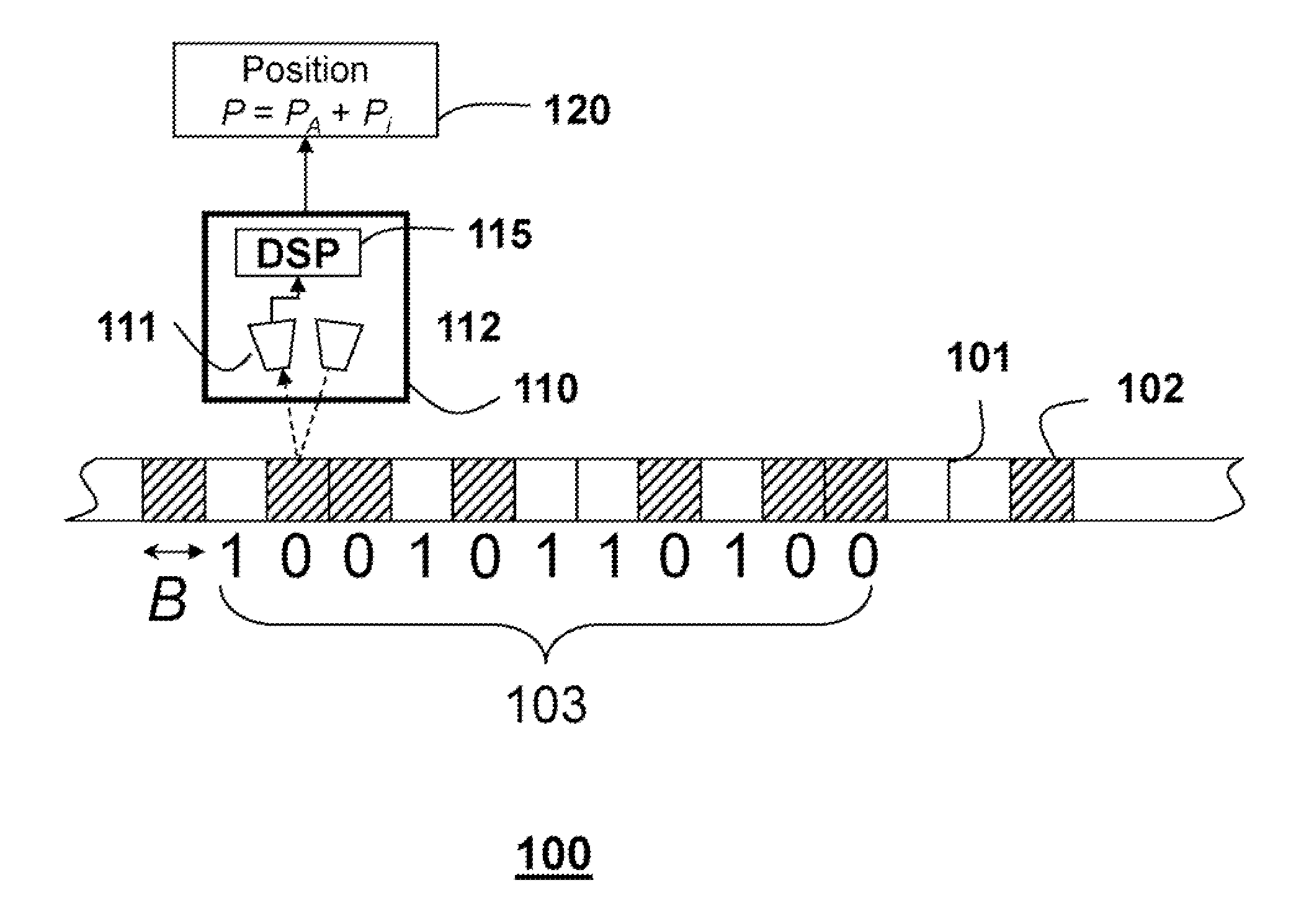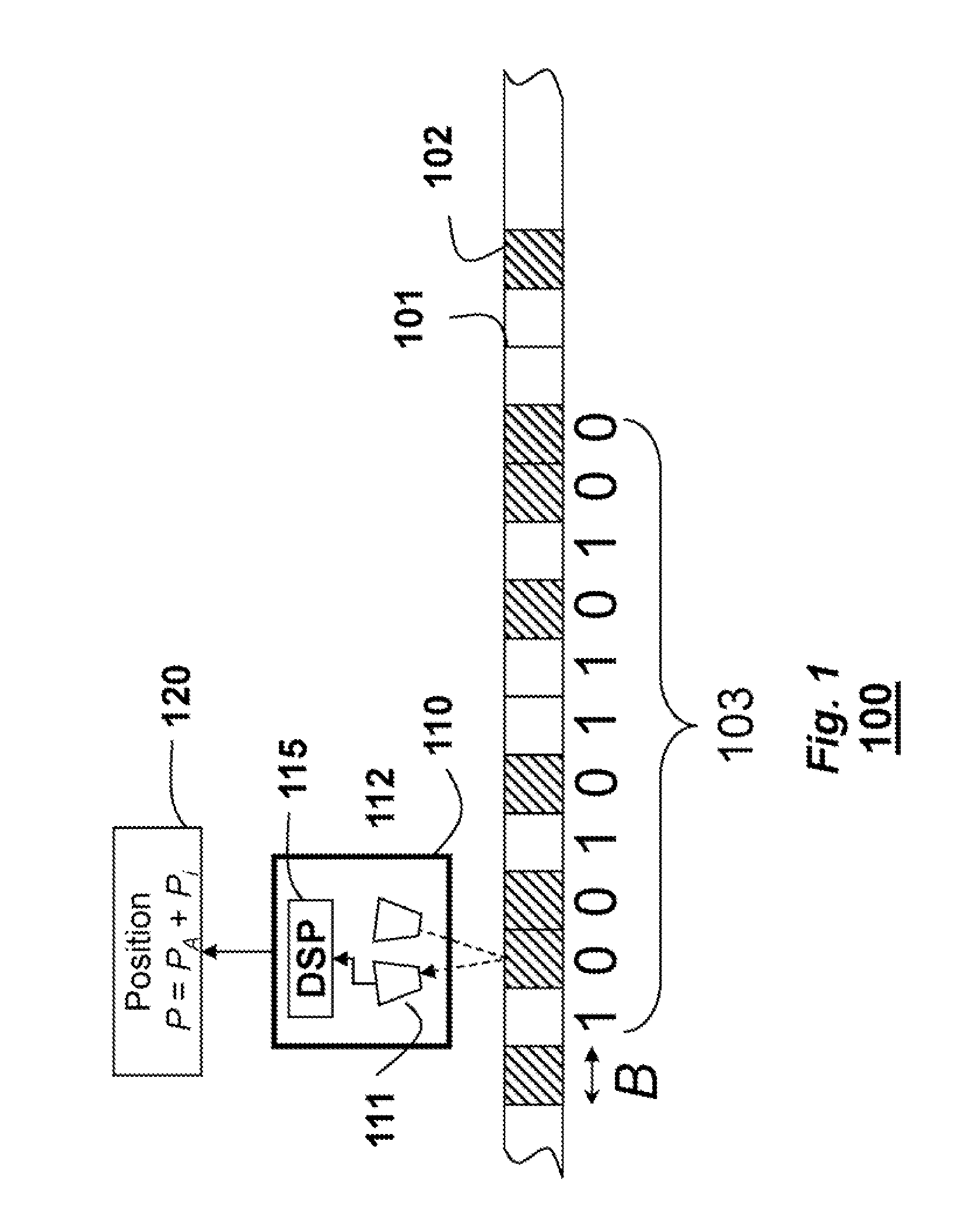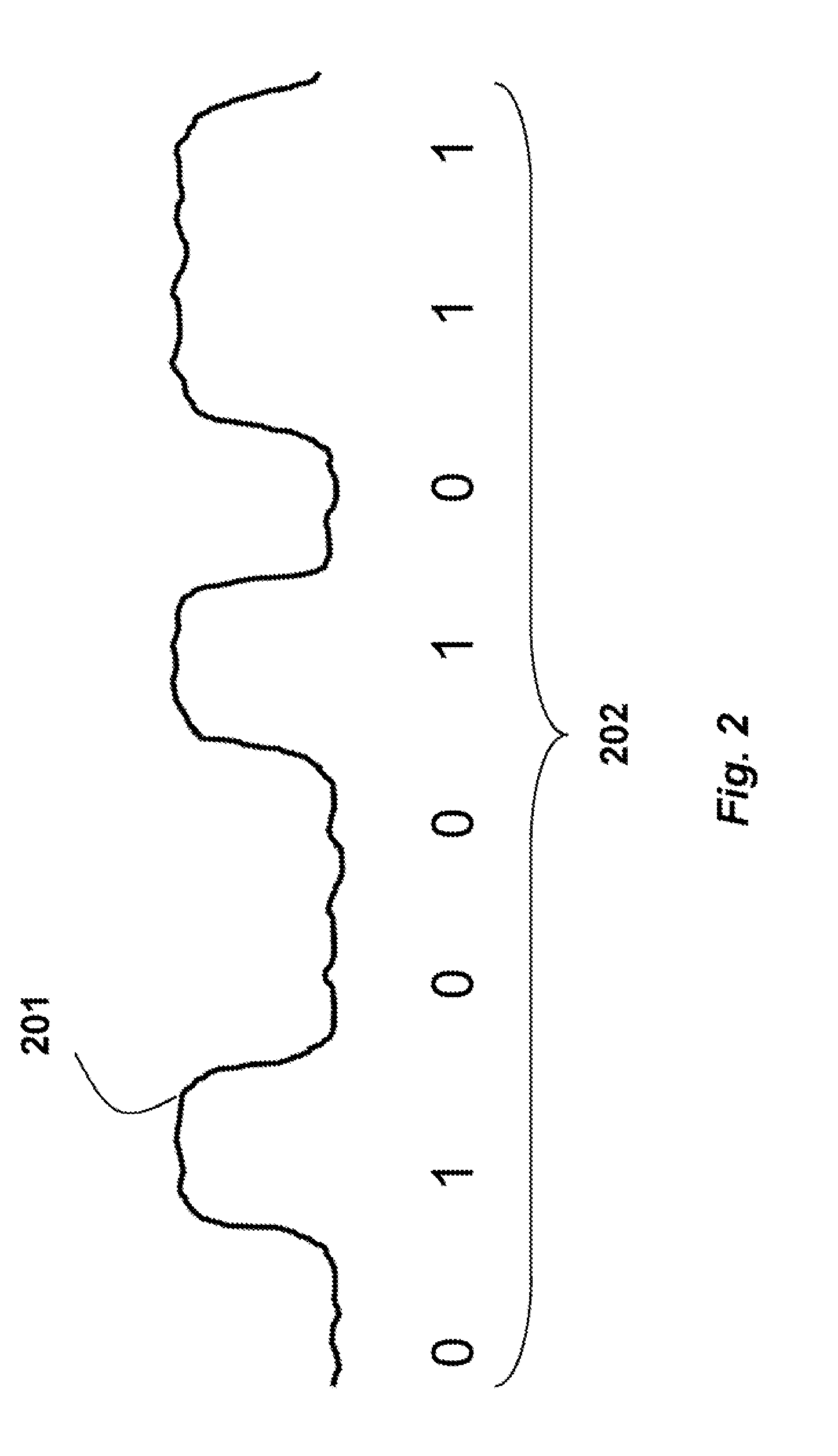Method for Estimating Positions Using Absolute Encoders
a technology of absolute encoder and position estimation, which is applied in the direction of speed measurement using gyroscopic effects, instruments, surveying and navigation, etc., can solve the problems of limited relative position resolution, time-consuming and laborious, and resolution of position estimates, so as to achieve high accuracy and high accuracy the effect of position estimation and high speed
- Summary
- Abstract
- Description
- Claims
- Application Information
AI Technical Summary
Benefits of technology
Problems solved by technology
Method used
Image
Examples
Embodiment Construction
[0024]The embodiments of our invention provide a method for determining high precision position estimates for absolute single track linear encoders.
[0025]Absolute Scale
[0026]FIG. 1 shows a scale 100 of an absolute encoder for one embodiment of our invention. Details of the scale are described in the related U.S. application Ser. No. 13 / 100,092, incorporated herein by reference. The scale is used to determine a high-resolution position P=PA+Pi 120.
[0027]The scale can include alternate light reflecting 101, and non-reflecting 102 marks. Each mark is B microns wide, which the scale resolution.
[0028]The width B of each mark is a half-pitch. In one embodiment, B is 20 microns. A readhead 110 is mounted at some distance and parallel to the scale. The readhead includes a sensor 111, a (LED) light source 112, and an optional lens. The sensor can be a detector array of N sensors, e.g., N is 2048. The array can be complementary metal-oxide-semiconductor (CMOS) or charge coupled device (CCD). ...
PUM
 Login to View More
Login to View More Abstract
Description
Claims
Application Information
 Login to View More
Login to View More - R&D
- Intellectual Property
- Life Sciences
- Materials
- Tech Scout
- Unparalleled Data Quality
- Higher Quality Content
- 60% Fewer Hallucinations
Browse by: Latest US Patents, China's latest patents, Technical Efficacy Thesaurus, Application Domain, Technology Topic, Popular Technical Reports.
© 2025 PatSnap. All rights reserved.Legal|Privacy policy|Modern Slavery Act Transparency Statement|Sitemap|About US| Contact US: help@patsnap.com



